Photographing Kids in Color and Black and White: 7 Steps to Better Portraits of Children
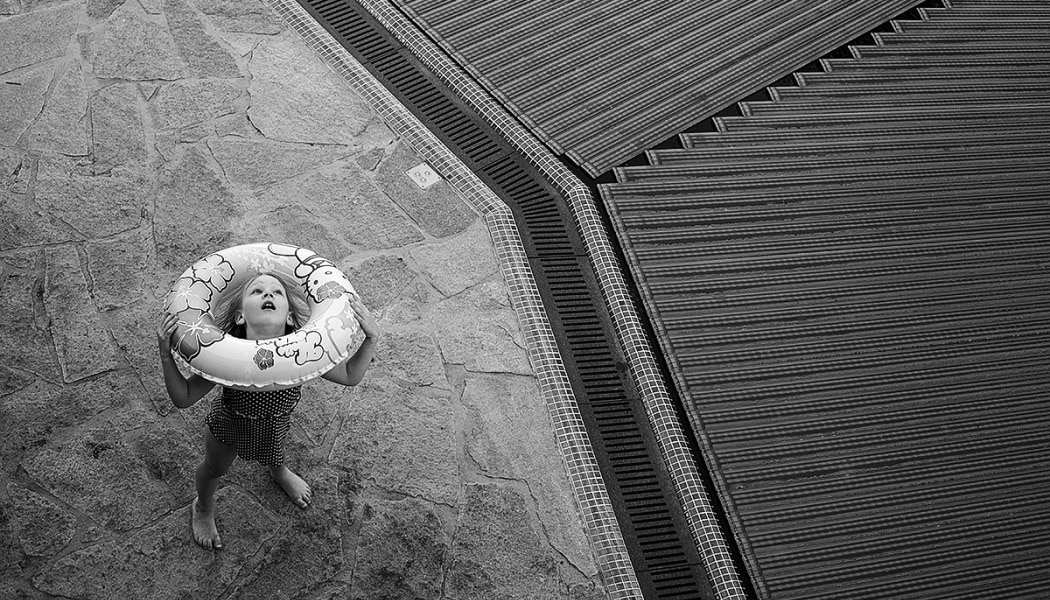
Most of us connect photos of children with vibrant and cheery colors. But leaving the colors in a picture isn’t always the best approach. Learn these simple guidelines for photographing children, and your pictures will look cleaner and more professional.
One basic mistake when photographing children (or anyone) is “color chaos” in a picture. Clothing, foregrounds, backgrounds, props—everything has a color.
These colors should work in harmony. The more colors a photo contains, the more fragmented and chaotic it feels. But you can create a balanced composition even with colorful topics. You just need to follow our tips below.
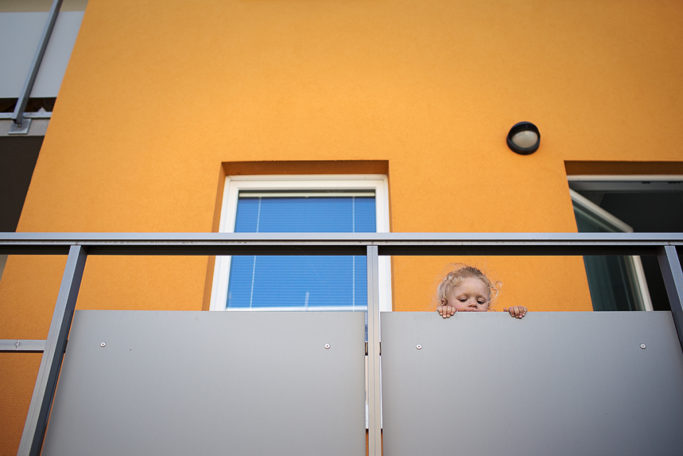
Canon EOS 6D, Canon EF 35 mm f/1.4L USM, 1/1250 s, f/2.8, ISO 200, focal length 35 mm
Choose Just One Color Accent in Your Kid Photos
You can give your photos of children a bigger impact by keeping things simple. So find an environment that’s neutrally colored (e.g. granite blocks) and connect it with a single striking color. Red works great here. So does yellow. But definitely don’t selectively desaturate your picture on a computer—it doesn’t look natural.
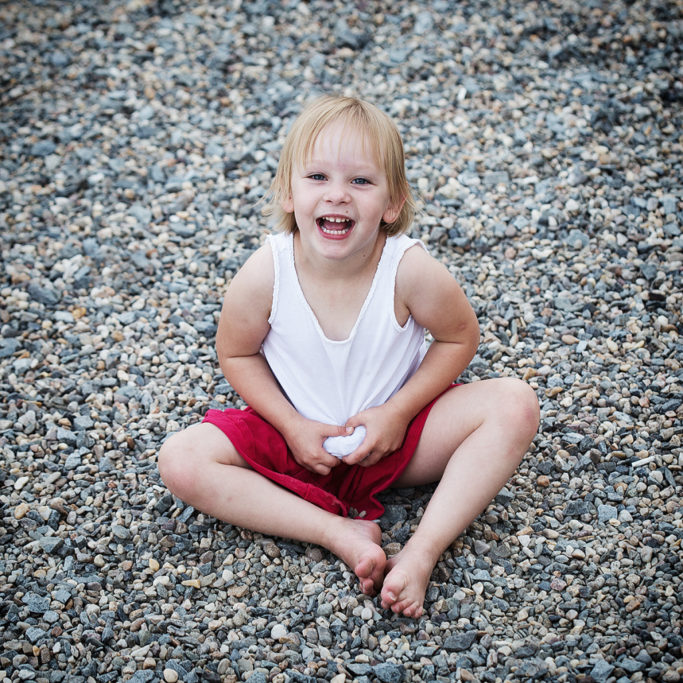
Canon EOS 6D, Canon EF 100 mm f/2.8 Macro USM, 1/160 s, f/4, ISO 200, focal length 100 mm
Combine Complementary Colors
Colors that lie opposite each other on the color wheel are called “complementary colors.” When you arrange the colors of the rainbow into a circle, you get these pairs: red and green, yellow and purple, orange and blue.
If you take additive color mixing, which works with three primary colors—red, green, and blue—as your foundation, you get colors divided up like this: red and cyan, green and magenta, yellow and blue. Both of these approaches can give you the kind of color contrast you’re looking for.

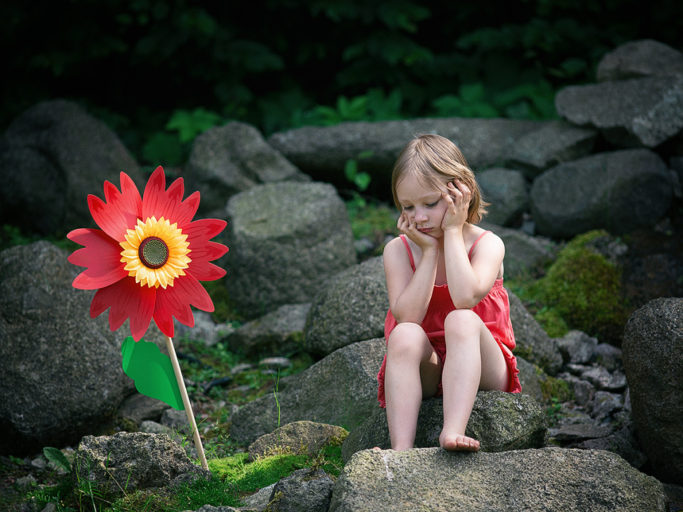
Canon EOS 6D, Canon EF 200 mm f/2.8 L II USM, 1/640 s, f/2.8, ISO 100, focal length 200 mm
Show off Tones’ Softness
There are also other ways to get a photo with harmonious colors. For example, use multiple shades of one color, or interconnect colors that lie next to each other on the color wheel. Meanwhile, if you reach for pastel shades, the photo that you get will surprise you with its softness.
Watch out for Pictures in Your Pictures
Even though kids love shirts with pictures of cartoon characters, try to stick to single-color clothing when you’re photographing children. The result will look much more consistent.
You’ll mainly find all this advice useful when you’re taking staged photos, where you can think over and prepare lots of things in advance. In reportage, which captures the “here and now,” there’s no chance to fine-tune the colors. And you don’t even want to.
That’s why many photographers give preference to a black-and-white take in their reportage photosof both adults and children. Conversion to shades of gray calms down scenes that would otherwise have chaotic colors, and lets their main topics shine through. It can sometimes even support a story that would be less visible in color.
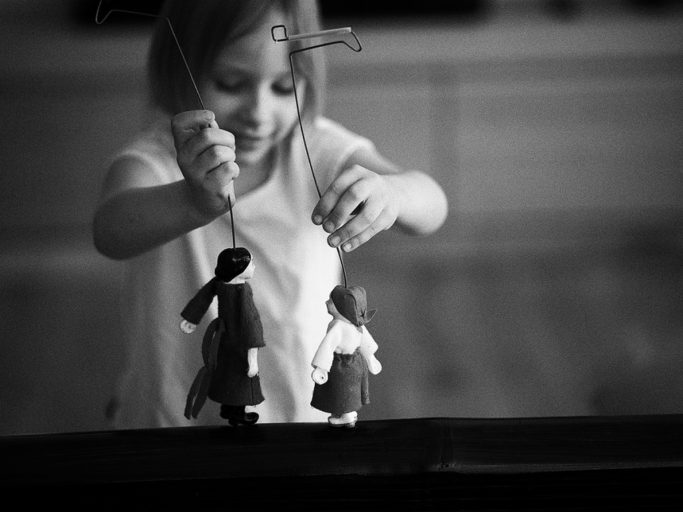
Canon EOS 6D, Canon EF 85 mm f/1.8 USM, 1/250 s, f/1.8, ISO 200, focal length 85 mm
Watch out for a Lack of Contrast
When you convert a soft-toned picture with pastel colors into black and white, it will probably look a little drab. For a black-and-white photo to look good, it has to have contrast. So it should contain both dark and light areas.
Black and white works best for pictures based on alternating shadows and light, or on strong contrasts between individual areas. So when you’re converting pictures to black and white, work carefully.
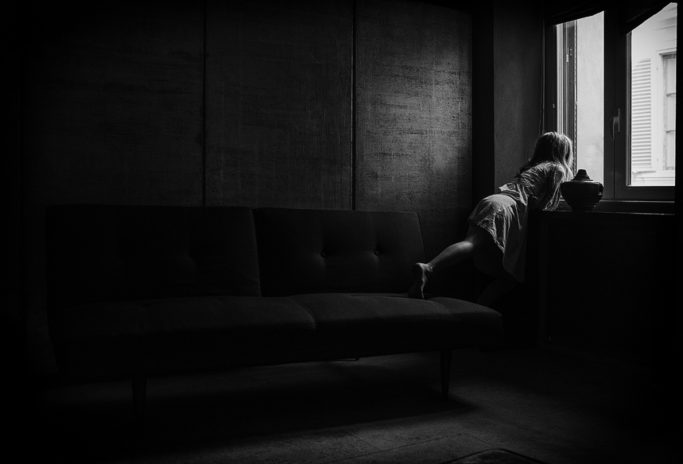
Canon EOS 6D, Canon EF 35 mm f/1.4L USM, 1/160 s, f/2.8, ISO 800, focal length 35 mm
Think of Emotions When You’re Photographing Kids
Getting the colors out of a photo gives you a better idea of what’s really going on there. Especially when you’re capturing moments of emotion, color can do a picture more harm than good. So for black-and-white photos, it pays to play with their atmosphere until they have an exceptional emotional charge.
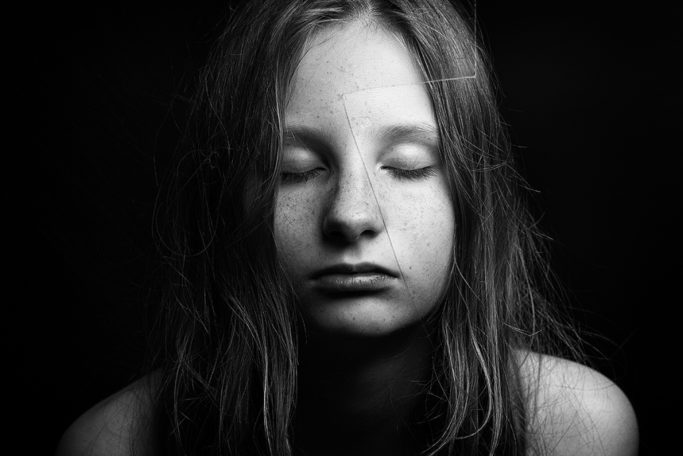
Canon EOS 6D, Canon EF 200 mm f/2.8 L II USM, 1/125 s, f/9, ISO 100, focal length 200 mm
Meanwhile keep in mind that it’s better to take your originals in color, and convert them to black and white in Zoner Studio. That way you can suppress or emphasize the different color channels during conversion to get just the right atmosphere. And you can also compare your results for a conversion with the original and double-check that the black-and-white version really is better.

There are no comments yet.